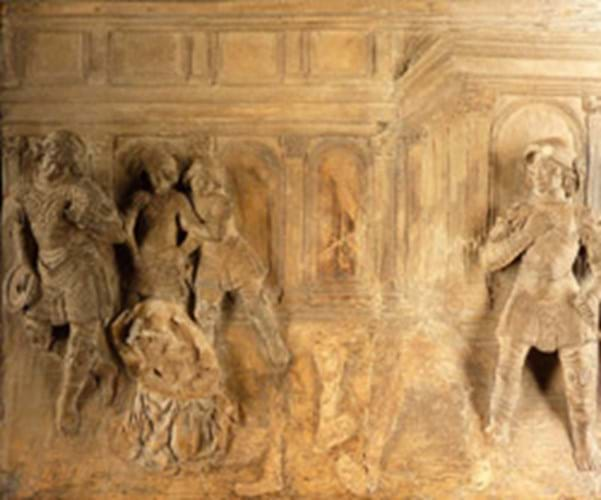
La Bella Principessa, identified by art historical analysis and the presence of the artist's fingerprint, is going on public show in Gothenburg, Sweden, as the star attraction of an exhibition of Renaissance artworks. And There Was Light runs at the city's dockside Eriksbergshallen from March 20 to August 5.
A cluster of academics will be in town to assess and discuss the sensational find with Peter Silverman, the man who spotted the work and instigated the critical and scientific analysis that led to its reattibrution.
But another Silverman "find" looks set to share the exhibition limelight: a terracotta bas-relief plaque, 13 x 16in (33 x 41cm), depicting The Beheading of St John the Baptist and identical to the silver relief plaque made around 1478/80 for the altar of the Baptistery in Florence (now in the city's Museo dell'Opera del Duomo).
The plaque has traditionally been ascribed to the workshop of Andrea del Verrochio, but Gary M. Radke of Syracuse University recently contended that two of the figures - the youth with salver on the left of the scene, and the officer with mace second from right - are the work of Leonardo da Vinci.
Radke made the claim in his lavishly illustrated catalogue to the exhibition Leonardo and the Art of Sculpture, which ran at the High Museum, Atlanta, from October 2009 to February 21, and opens at the Getty Museum in Malibu on March 23. Radke noted that the recent completion of a three-year cleaning operation of the silver plaque "has allowed a detailed examination of its individual components".
Now, in the catalogue to the Gothenburg exhibition, Professor Alessandro Vezzosi, director of the Museo Ideale in Vinci, insists that following "recent scientific analyses, including extraordinary shots by Lumière Technology", the authorship of the terracotta plaque "can and must be newly addressed". He adds: "Leonardo's hand may indeed be imagined to lie behind the two extraordinary figures in question."
Details of the terracotta plaque's provenance remain hazy. It was recorded in 1894 as belonging to an official at the Austro-Hungarian embassy in Rome and appeared at auction in Vienna in 1926 as part of the Castiglioni Collection.
Silverman bought it "for around £3000" at Sotheby's London in 1995 (as "after Verrocchio"). "I find it almost preposterous to think that we may have been holding a Leo sculpture all these years," he says. "Folks will think we are manufacturing them! Then appeared Gary Radke's expo and catalogue, and suddenly scholars I respect were saying 'This thing merits serious consideration'. So we decided to put it out there for all to see and examine."
By Simon Hewitt
Link:
Fingerprint points to $19,000 portrait being revalued as £100m work by Leonardo da Vinci




